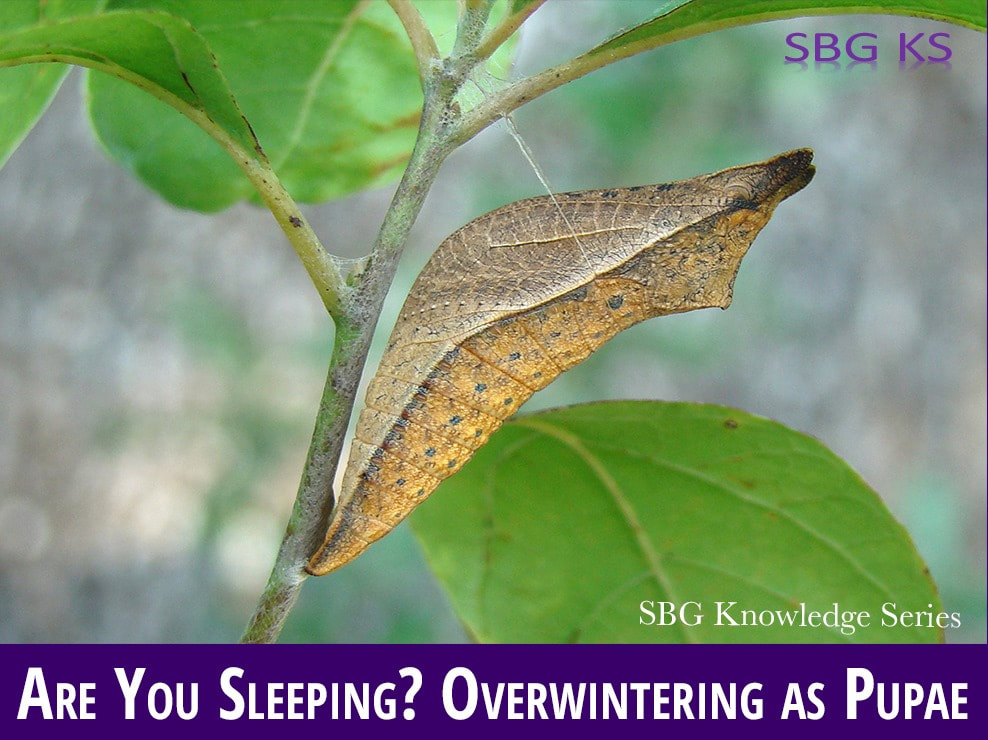The Spicebush Swallowtail (Papilio Troilus) butterfly looks for a protected spot to construct its chrysalis. When the swallowtail is ready, it will stop eating. It will bow its head in an upside-down “J” and spin a silk button to attach its head to a twig or branch. It then makes a silk “harness” to hold the chrysalis snugly in place. Relatively safe in its well-camouflaged little home, the developing pupa survives without eating or drinking by lowering its metabolic rate to the bare minimum. To keep from freezing, its body makes glycerol, which acts as an antifreeze.
So the next time you’re out for a winter walk, look out for those dead leaves still attached to trees and shrubs—you just might spot a chrysalis!
Author: Lisa Schneider
Photo credit: UC Davis Art-Science Fusion


 RSS Feed
RSS Feed